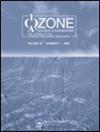Empirical Modeling of Bromate Formation and Chemical Control Strategies at Multiple Water Reuse Facilities Using Ozone
IF 1.4
4区 环境科学与生态学
Q3 ENGINEERING, ENVIRONMENTAL
引用次数: 1
Abstract
ABSTRACT As an increasing number of potable water reuse projects consider feasibility of implementing ozonation for achieving disinfection goals and removal of trace organic compounds, bromate formation presents a practical barrier. In this study, data received from five potable water reuse facilities showed that ozone dissolution method such as fine bubble diffusion resulted in lower concentrations of bromate compared to side-stream addition. When using multipoint ozone dissolution some reduction in bromate formation was also observed. Data from these facilities displayed a positive correlation between ozone (as a function of O3:TOC ratio) and bromate formation (as molar ratio of bromide converted to bromate) with lower formation as monochloramine or hydrogen peroxide concentrations increase. This study provides an empirical model with four equations which can be used to estimate the bromate formation and the required monochloramine or hydrogen peroxide dose to achieve adequate bromate control, i.e. below MCL of 10 µg/L, if a desired O3:TOC ratio and initial bromide concentration are known. The empirical model estimates for monochloramine and hydrogen peroxide were found to be in good agreement with experimental data (R2 = 0.96 and R2 = 0.87, respectively) while within a set of boundary conditions expressed by range of concentrations of typical water quality parameters.多处臭氧回用设施溴酸盐形成的经验模型及化学控制策略
随着越来越多的饮用水回用项目考虑实施臭氧化以实现消毒目标和去除微量有机化合物的可行性,溴酸盐的形成提出了一个实际的障碍。在本研究中,从五个饮用水回用设施获得的数据表明,臭氧溶解方法,如细泡扩散,与侧流添加相比,溴酸盐浓度较低。当使用多点臭氧溶解时,也观察到溴酸盐形成的一些减少。来自这些设施的数据显示臭氧(作为O3:TOC比率的函数)与溴酸盐形成(作为溴酸盐转化为溴酸盐的摩尔比)之间呈正相关,随着一氯胺或过氧化氢浓度的增加,形成量降低。本研究提供了一个具有四个方程的经验模型,可用于估计溴酸盐的形成和所需的单氯胺或过氧化氢剂量,以实现足够的溴酸盐控制,即低于10 μ g/L的MCL,如果所需的O3:TOC比和初始溴化物浓度已知。单氯胺和过氧化氢的经验模型估计与实验数据吻合良好(R2分别为0.96和0.87),且在典型水质参数浓度范围表示的一组边界条件内。
本文章由计算机程序翻译,如有差异,请以英文原文为准。
求助全文
约1分钟内获得全文
求助全文
来源期刊

Ozone: Science & Engineering
环境科学-工程:环境
CiteScore
5.90
自引率
11.10%
发文量
40
审稿时长
2 months
期刊介绍:
The only journal in the world that focuses on the technologies of ozone and related oxidation technologies, Ozone: Science and Engineering brings you quality original research, review papers, research notes, and case histories in each issue. Get the most up-to date results of basic, applied, and engineered research including:
-Ozone generation and contacting-
Treatment of drinking water-
Analysis of ozone in gases and liquids-
Treatment of wastewater and hazardous waste-
Advanced oxidation processes-
Treatment of emerging contaminants-
Agri-Food applications-
Process control of ozone systems-
New applications for ozone (e.g. laundry applications, semiconductor applications)-
Chemical synthesis.
All submitted manuscripts are subject to initial appraisal by the Editor, and, if found suitable for further consideration, to peer review by independent, anonymous expert referees.
 求助内容:
求助内容: 应助结果提醒方式:
应助结果提醒方式:


